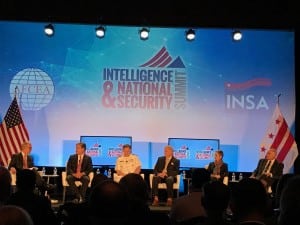
The directors of the National Security Agency (NSA) and the FBI affirmed their support for a foreign surveillance provision that allows for the targeted collection of information on non-U.S. citizens located outside of the country and both pledged a common goal to eliminate insider threats in their organizations at a national intelligence summit on Thursday. New FBI Director Christopher Wray, making his first public speaking appearance since assuming the role, and NSA Director Adm. Mike Rogers, who also serves as…

 By
By 











